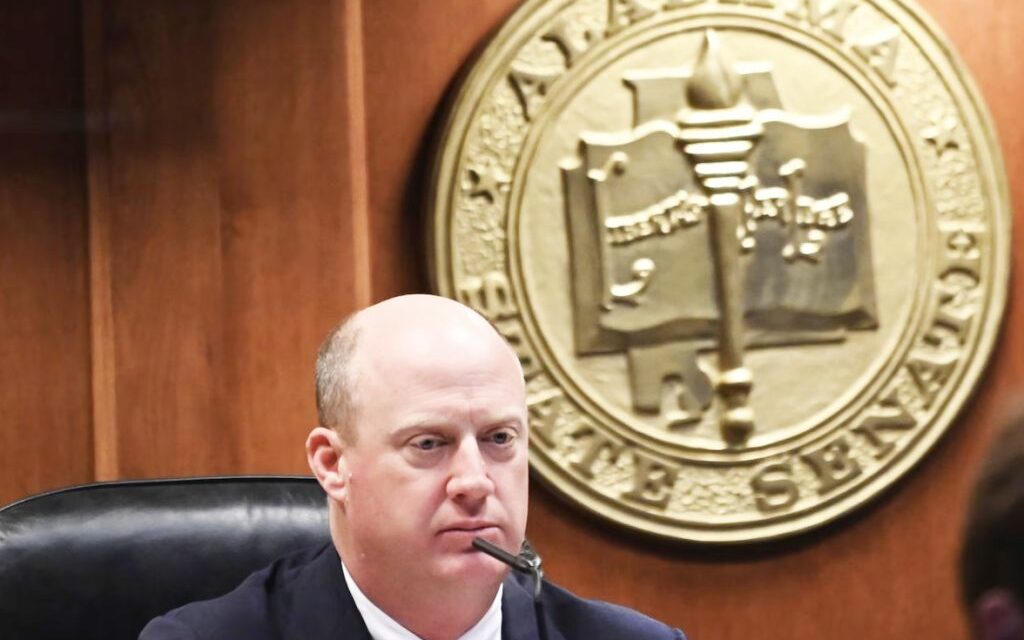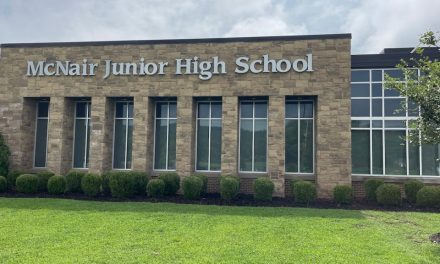By Patrick Darrington & Howard Koplowitz
Lt. Gov. Will Ainsworth has claimed that a federal immigration program is leading to a rise in HIV cases within Alabama.
Is this claim true?
The migrant crisis: NYC voters sound off
On X, formerly known as Twitter, Ainsworth shared pictures of a letter addressed to Department of Homeland Security Director Alejandro Mayorkas. In the letter Ainsworth claims that the Cuba-Haiti-Nicaragua-Venezuela (CHNV) Parole Program has had negative impacts for Alabama.
Blaming Mayorkas and the Biden-Harris administration Ainsworth said that they have created an environment of “chaos” and “crime” while alleging that HIV rates are soaring as a result of migrants.
“The Biden-Harris administration has created, and your office has allowed, an environment that is ripe for chaos, crime, and the depletion of state resources,” Ainsworth said.
“The HIV rate is soaring, unlicensed drivers are having accidents, insurance rates are up, and our schools are being flooded with non-English speaking students whose teachers are not equipped to serve them.”
According to quarterly HIV data from the Alabama Department of Health there has been no substantial increase in news cases over the last several years. The total number of newly diagnosed HIV cases each year since 2019 are:
- 535 in 2019
- 532 in 2020
- 391 in 2021
- 452 in 2022
- 541 in 2023
For 2024 the latest available data includes statistics from January until June. According to those numbers 235 new individuals were diagnosed with HIV.
AL.com contacted Ainsworth’s office to provide any data to support the claim that HIV rates were soaring. His office has not responded yet.
Jean Hernandez, Latinx program coordinator for el Centro de Acceso para Latinos de Alabama — the Latino outreach arm for AIDS Alabama — said HIV “affects all ethnicities and races; this is a virus, and a virus doesn’t discriminate based on age, gender, income, social class, disability, geographic location, or sexual orientation.”
The Alabama Department of Public Health’s preliminary data on new HIV cases this year breaks down that information by race but not by nationality.
Of the 245 new cases among people living in Alabama through June, Black people accounted for 143 cases, or 58.4% of new cases. White people comprised 28.2% of new cases, or 69 cases. Hispanic people accounted for a little more than 10% of cases, or 25 cases while multi-racial people and people identified only as “other/unknown” races made up more than 3% of all new cases, or eight cases.
“We must honor the contributions of immigrants in Alabama who are contributing to the state’s culture, food, and economy as workers and entrepreneurs, not to mention generating millions in business and tax revenues,” Hernandez continued.
“Less than accurate information creates HIV stigma, mistrust, and health disparities and reinforces the discrimination against immigrants and people living with HIV.”
According to a July press release from U.S. Customs and Border Protection, those who arrived here as part of the CHNV program did so legally.
Yet, Ainsworth said in his letter that the individuals were “illegal aliens.”
“Through the end of July 2024, over 520,000 Cubans, Haitians, Nicaraguans, and Venezuelans arrived lawfully on commercial flights and were granted parole under these processes. Specifically, 110,000 Cubans, 211,000 Haitians, 95,000 Nicaraguans, and118,000 Venezuelans were vetted and authorized for travel; and109,000 Cubans, 205,000 Haitians, 90,000 Nicaraguans, and 115,000 Venezuelans arrived lawfully and were granted parole,” Ainsworth wrote.
The letter comes as residents in several Alabama cities experiencing Haitian migration have displayed anger and distrust of their new neighbors. Some expressed fears of migrants snatching jobs or straining community resources.
According to the city of Athens, “the number of new enrollments in the school system is minimal, and there has not been a noticeable increase in the municipal court docket.”
Sylacauga School Superintendent Michele Eller said the system has only seen one Haitian student added in the system this year – out of nearly 2,000 students in four schools. By contrast, the system added about 20 Hispanic students last year, bringing its overall total to about 40. There is also a student who speaks Mandarin Chinese.
Currently, Alabama has 2,569 Haitian residents, according to the U.S. Census Bureau. That makes up .05% of the state population.
Haitian migrants have found themselves in the national spotlight after former president Donald Trump and Sen. JD Vance spread debunked rumors of pets being eaten in Springfield, Ohio.
The Haitian community has also been subjected to a falsehood that has circulated since HIV erupted in the 1980s, according to a recent article from The Conversation.
Nathan H. Dize, Arts & Sciences at Washington University in St. Louis, wrote that in 2017, Trump reportedly “stormed into a meeting” on immigration from Haiti and repeated the claim that “they all have AIDS,” he said. The account came from author Jake Johnston, a senior research associate at the Center for Economic and Policy Research.
The Reagan administration called the virus the “4H disease,” referring to Haitians, hemophiliacs, “homosexuals” and heroin users.
Haitians were the only nationality singled out as an “at-risk” population for contracting HIV/AIDS. The Centers for Disease Control and Prevention removed Haitians from its list of highest-risk groups in 1985.











